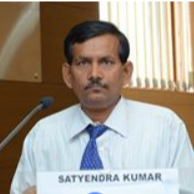
Satyendra Kumar
Work place: Department of Electrical and Electronics Engineering, S. G. Balekundri Institute of Technology, Belagavi, India
E-mail: satyendra.satyendra@gmail.com
Website:
Research Interests: Computational Engineering, Engineering
Biography
Dr. Satyendra Kumar completed his Bachelor of Engineering in the stream of Electrical and Electronics Engineering from Bihar University and his masters in the field of Electrical Power from Ranchi University. Presently he is working as Professor and Head with S. G. Balekundri Institute of Technology Belagavi. He completed his Ph. D at Birsa Institute of Technology, Jharkhand. His area of research includes Microprocessor, Electrical Drivers.
Author Articles
Comprehensive Study of Data Aggregation Models, Challenges and Security Issues in Wireless Sensor Networks
By Veena I Puranikmath Sunil S Harakannanavar Satyendra Kumar Dattaprasad Torse
DOI: https://doi.org/10.5815/ijcnis.2019.03.05, Pub. Date: 8 Mar. 2019
The use of wireless sensor networks has been increasing tremendously in the past decades mainly because of its applications in military, medicine, under water survey and various other fields. Depending on the applications the sensor nodes are placed in different areas and the data sensed will be sent to the base station. The process of transmitting and receiving data sensed by the sensor nodes continues till the sensors have battery life. This leads to generate data redundancy and reduces efficiency of the network. In order to overcome the limitations faced by the wireless sensor networks, the fusion of data known as data aggregation is introduced. In data aggregation, the data sensed by the various nodes are aggregated and sent to the base station as a single data packet. In this paper, a brief review on various data aggregation methods, challenges and issues are addressed. In addition to this, performance parameters of various data fusion methods to measure the efficiency of the network are discussed. The design of single aggregator models are easy compared to the multiple aggregator models. However, the security to most of the data fusion schemes is provided by using message authentication code. It also uses public keys and symmetric to achieve end to end or hop by hop encryptions.
[...] Read more.Other Articles
Subscribe to receive issue release notifications and newsletters from MECS Press journals